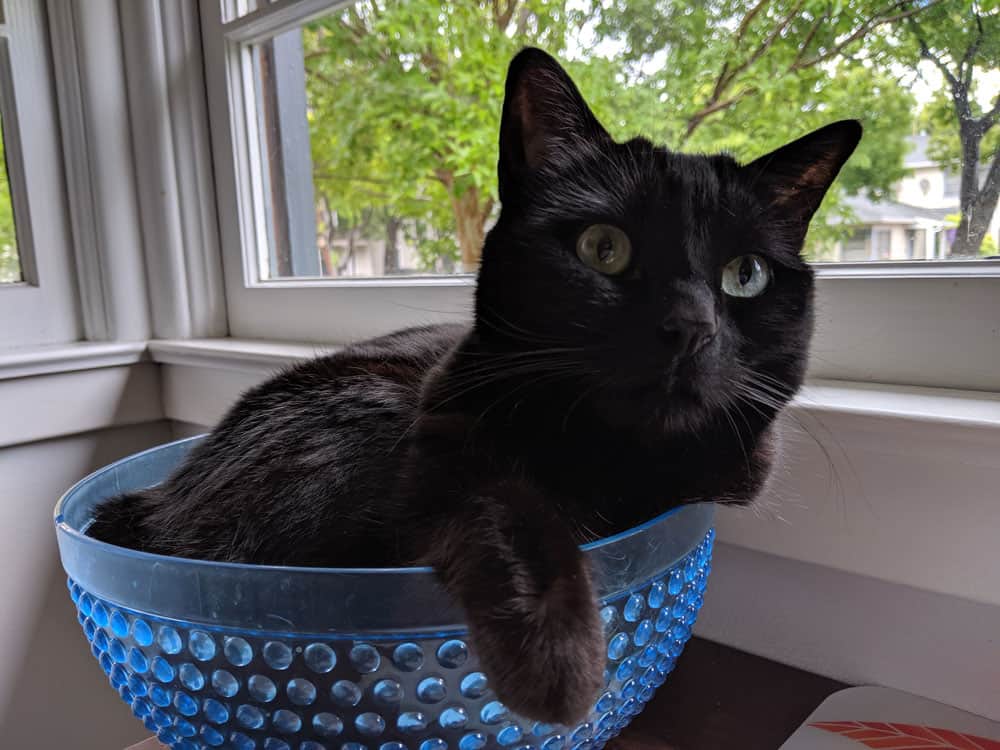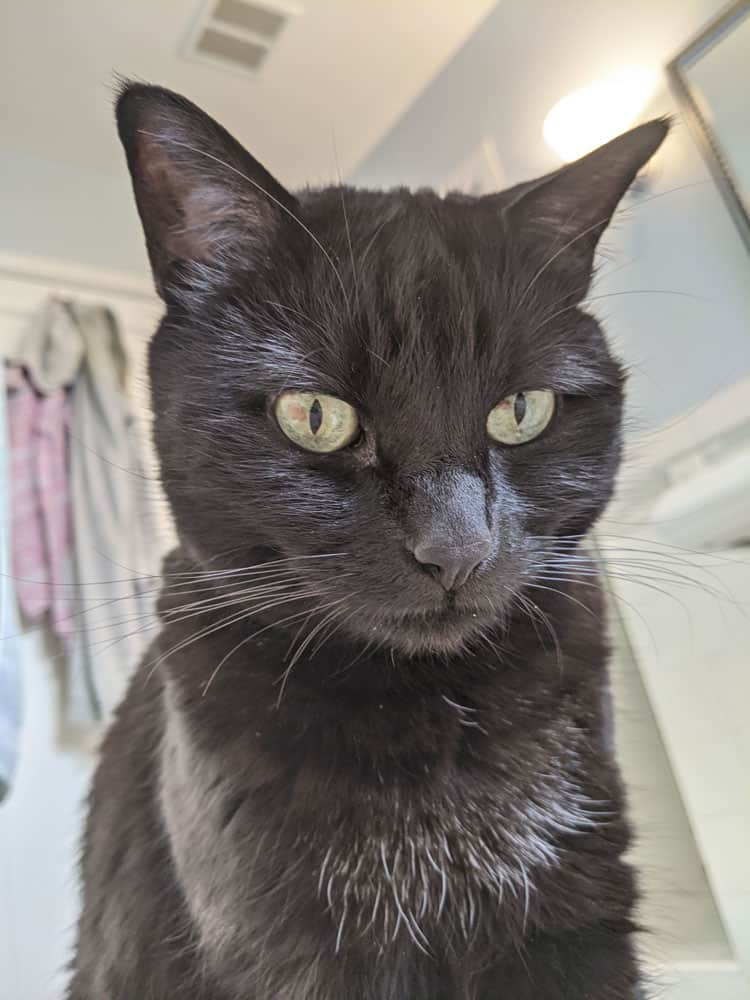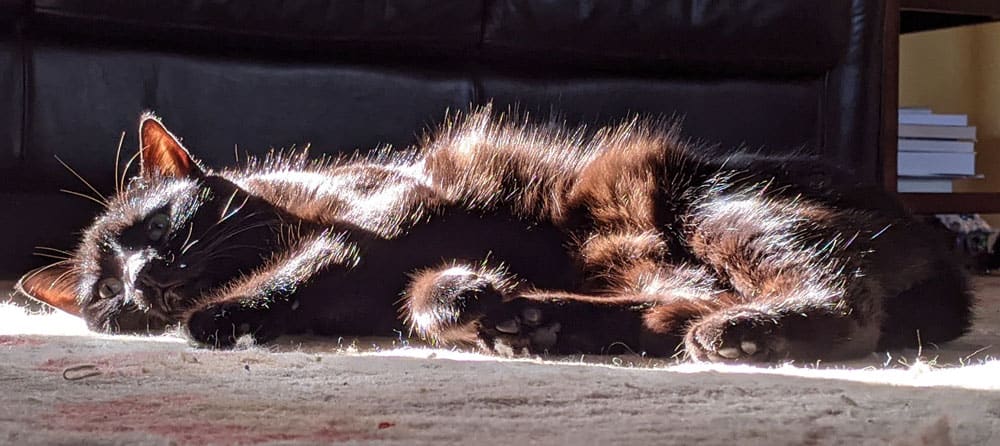Humans have kept animals as pets as long back as 30,000 years ago, according to historical data. Cats were one of the first animals to be domesticated as pets, second only to dogs.
Throughout history, the place of cats in human evolution has been clearly documented. For instance, in ancient Egypt, cats were considered magical creatures. It was common to see wealthy and royal families dressing cats with inexpensive jewelry and feed them the best treats. Ancient Egyptians believed cats could bring good luck to their owners.
Different civilizations held varying beliefs about cats. Unfortunately, black cats have long been associated with bad luck by some superstitious people. While this notion has died down in the recent past, many people still believe black cats are tied to misfortune.
Why do certain cats have black fur? Read on to learn more about black cats.

Why do some cats have black fur?
Cats come in all sizes and colors. Some cats are single-colored, some have a blend of colors, and others have little-to-no fur. However, many people are mostly fascinated with black-furred cats.
From a scientific point of view, cats with black fur are a result of genetic coding. For a cat to have black fur, both its parents need to have a dominant black color gene known as an allele. If one parent cat doesn’t have the black allele gene, the offspring usually have a blend of black and other colors. For instance, you’ve likely seen black cats with different stripes, especially in the back and paws.
There are about 22 cat breeds with a prevalent black coat per the Cat Fancier’s Association, with Bombay cats being the only breed that only has a black coat.
Other cat breeds with a dark coat are the Japanese Bobtail, Norwegian Forest Cat, Scottish Fold, Maine Coon, and the Devon Rex cat.
Black cats make up about 25% of all cat breeds.
What causes cats to have a black coat?
As mentioned above, genes are mainly responsible for the dark coating on black cats. For a cat to exhibit black coating, one or both of the parents need to have the dominant black fur gene.
While the genetic purpose of black fur is not fully understood, scientists believe cats with a dark coating may have better immune systems. For example, black cats are more resilient to common cat illnesses, such as Feline HIV.
How common are black cats?
In history, black cats have been viewed as the harbinger of misfortune. As a result, most black felines were either abandoned or, worse still, killed.
Black cats are believed to make up about 25% to 30% of all cats. It is not uncommon to find them being adopted as cats, and many people now believe black cats to be a sign of good luck.
Black cats have two separate days dedicated to celebrating them. With the 17th of August dedicated to Black Cat Appreciation Day, you can expect to see more cats being adopted and widely accepted by society. October 27 is National Black Cat Day.
Black cats, for example, are said to bring good luck to their owners in Japan. Single women, especially, are advised to keep black cats as pets as they attract potential suitors.
Are black cats overlooked in adoption centers and animal shelters?
With the narrative changing on black cats, more people are open to adopting dark-colored felines. Unfortunately, if you visit most pet adoption centers, you’ll encounter more than a few black cats with nowhere to go.
There is conflicting research as to whether or not black cats are harder to be adopted. A 2013 study of shelters in Colorado, found that all-black cats averaged 26.25 days in the shelter before being adopted as compared to cats of other colors which averaged 24.01 days.
Other research has shown that black cats are just as appealing to potential adopters as any other color of cat. Some of these researchers hypothesize that lingering tales about blacks cats bringing bad luck and the fact that black cats are the most common color of cat found in shelters as the reason for this persistent myth.
A 2013 survey by the APCA found that black cats accounted for 33 percent of all cats entering shelters, with gray cats accounting for 22 percent of all cats. Of the cats that were adopted, 31 percent were black.
What are piebald cats?
Also known as tuxedos or bicolor cats, piebald cats are felines with a combination of white and another color. Depending on the breed, cat fur can be displayed in various colors and patterns throughout the body.
Some color combinations, such as cream and white, are quite rare, and these cats are usually highly sought after for their appearance. While most piebald cats have white and black fur, they can also have different colors, such as orange, silver, and gray.
Is your black cat changing fur color?
Some cat owners notice a color change in black cats. There are various factors that lead to color change in black cats, and identifying the root cause of this change is integral to the cat’s health and general quality of life.
Some of the factors leading to a color change in black cats

Age – Like humans, the fur on your cat may begin to lose the dark pigment with age. In these cases, the fur will likely turn gray, and there’s no cause for concern.
Illness – Cats with liver, kidney, and liver issues may cause fading of fur. These issues affect the wellbeing of your cat and need to be addressed by your veterinarian.
Diet – Felines require about 22 amino acids, 11 of which are essential to the cat’s health and development. Deficiencies in zinc, copper, and tyrosine may result in color change.
Sun exposure – Similar to human hair, cat fur can lighten when exposed to excess sunlight.

Other factors contributing to fur color change include poor grooming practices, injury, stress, and fur shedding.
In summary, black cats have for long been despised in most regions of the world. Fortunately, the narrative is slowly changing, and dark-coated cats are now becoming popular and widely accepted by society.
The color of a cat’s fur has more to do with genetics and nothing about omens or bad luck. So, remember, whenever you see a black cat crossing the road, it’s just trying to get to the other side.
References
Bhattacharya, S. (2003, March 4). Black cats may be the more fortunate felines. New Scientist. https://www.newscientist.com/article/dn3459-black-cats-may-be-the-more-fortunate-felines/
Blake, Y. M. (2020, August 21). The truth about Black cats. BCARL. https://www.bcarl.net/post/the-truth-about-black-cats
Debunking the black cat myth. (2021, July 7). Kyhumane. https://www.kyhumane.org/black-cat-myth/
Kogan, L. R., Schoenfeld-Tacher, R., & Hellyer, P. W. (2013). Cats in animal shelters: Exploring the common perception that black cats take longer to adopt. The Open Veterinary Science Journal, 7(1). DOI: 10.2174/1874318820130718001
Weiss, E. (2014, June 18). Black is the new white | ASPCA professional. Archived on Wayback Machine. https://web.archive.org/web/20141121033806/www.aspcapro.org/blog/2014/06/18/black-new-white






